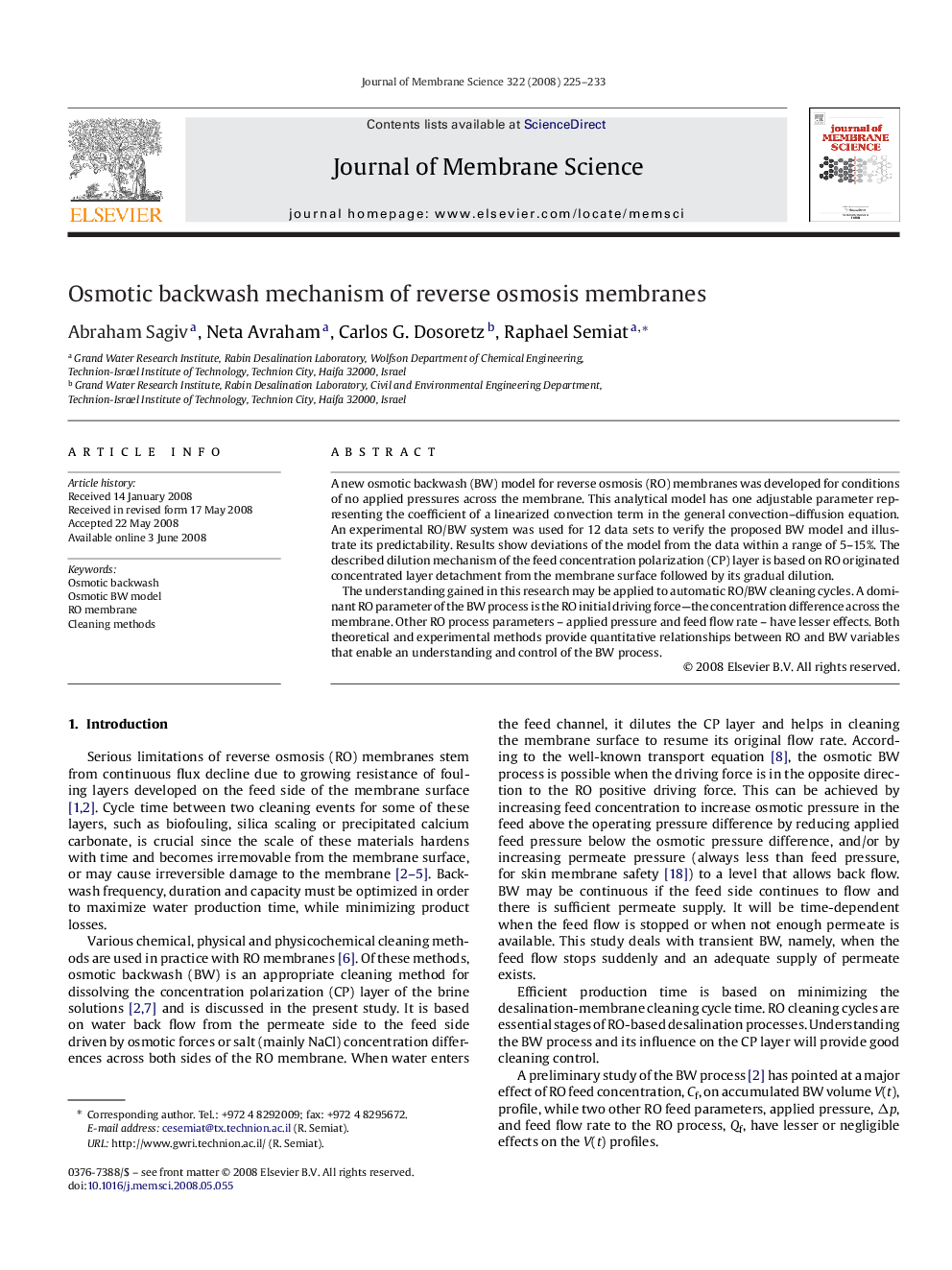| Article ID | Journal | Published Year | Pages | File Type |
|---|---|---|---|---|
| 637304 | Journal of Membrane Science | 2008 | 9 Pages |
A new osmotic backwash (BW) model for reverse osmosis (RO) membranes was developed for conditions of no applied pressures across the membrane. This analytical model has one adjustable parameter representing the coefficient of a linearized convection term in the general convection–diffusion equation. An experimental RO/BW system was used for 12 data sets to verify the proposed BW model and illustrate its predictability. Results show deviations of the model from the data within a range of 5–15%. The described dilution mechanism of the feed concentration polarization (CP) layer is based on RO originated concentrated layer detachment from the membrane surface followed by its gradual dilution.The understanding gained in this research may be applied to automatic RO/BW cleaning cycles. A dominant RO parameter of the BW process is the RO initial driving force—the concentration difference across the membrane. Other RO process parameters – applied pressure and feed flow rate – have lesser effects. Both theoretical and experimental methods provide quantitative relationships between RO and BW variables that enable an understanding and control of the BW process.
